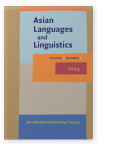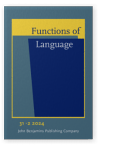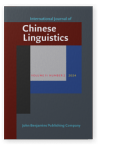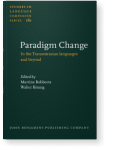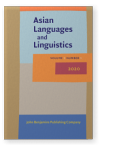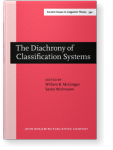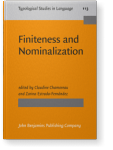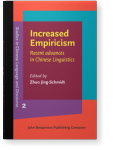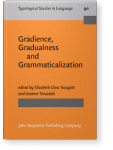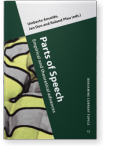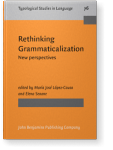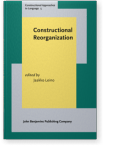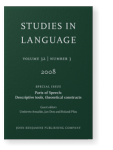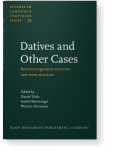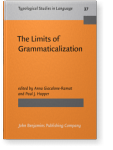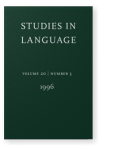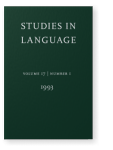Walter Bisang
List of John Benjamins publications for which Walter Bisang plays a role.
Journals
ISSN 0929-998X | E-ISSN 1569-9765
ISSN 2213-8706 | E-ISSN 2213-8714
Title
Paradigm Change: In the Transeurasian languages and beyond
Edited by Martine Robbeets and Walter Bisang
[Studies in Language Companion Series, 161] 2014. xix, 345 pp.
Subjects Historical linguistics | Morphology | Syntax
2020 Radical analyticity and radical pro-drop scenarios of diachronic change in East and mainland Southeast Asia, West Africa and Pidgins and Creoles Asian Languages and Linguistics 1:1, pp. 34–70 | Article
The paucity or absence of inflectional morphology (radical analyticity) and the omission of verbal arguments with no concomitant agreement (radical pro-drop) are well-known characteristics of East and mainland Southeast Asian languages (EMSEA). Both of them have a special status in typology and… read more
2018 Nominal and verbal classification: A comparative perspective The Diachrony of Classification Systems, McGregor, William B. and Søren Wichmann (eds.), pp. 241–282 | Chapter
The present paper starts from the observation that classification is cross-linguistically very widespread in the domain of the noun and rather rare in the domain of the verb. It argues that this asymmetry is not arbitrary. It is motivated by two conditions: (i) the markers used for classification… read more
2016 Finiteness, nominalization, and information structure: Convergence and divergence Finiteness and Nominalization, Chamoreau, Claudine and Zarina Estrada-Fernández (eds.), pp. 13–42 | Article
The correlation between finiteness and nominalization is frequently discussed in the literature. This paper will introduce information structure as a third factor that has an important impact on processes of grammaticalization. Nominalized verb forms can be used in the formation of relative clauses… read more
2014 Chapter 2. On the strength of morphological paradigms: A historical account of radical pro-drop Paradigm Change: In the Transeurasian languages and beyond, Robbeets, Martine and Walter Bisang (eds.), pp. 23–60 | Chapter
This paper will present a historical explanation of radical pro-drop based on the strength of morphological paradigms. It will start out from the observation that East and mainland Southeast Asian languages (EMSEA) with their reduced or absent morphology are radical pro-drop, while West African… read more
2014 Chapter 1. When paradigms change Paradigm Change: In the Transeurasian languages and beyond, Robbeets, Martine and Walter Bisang (eds.), pp. 1–20 | Chapter
2013 Subjecthood in Chinese: Neurolinguistics meets typology Increased Empiricism: Recent advances in Chinese Linguistics, Jing-Schmidt, Zhuo (ed.), pp. 23–48 | Article
The existence of subject-object asymmetry in Chinese is a point of controversy. From a UG perspective, the syntactic category of subject is invariably the same, while LaPolla (1990) argues that there is no such category in Chinese. This paper takes an intermediate position and starts out from the… read more
2010 Grammaticalization in Chinese: A construction-based account Gradience, Gradualness and Grammaticalization, Traugott, Elizabeth Closs and Graeme Trousdale (eds.), pp. 245–277 | Article
The present paper shows that constructions are the driving force of grammaticalization in Chinese. It will be argued that this is due to two typological properties: the relative freedom with which a lexical item can be assigned to different grammatical functions (precategoriality in Late Archaic… read more
2010 Precategoriality and syntax-based parts of speech: The case of Late Archaic Chinese Parts of Speech: Empirical and theoretical advances, Ansaldo, Umberto, Jan Don and Roland Pfau (eds.), pp. 65–86 | Article
2008 Grammaticalization and the areal factor: The perspective of East and mainland Southeast Asian languages Rethinking Grammaticalization: New perspectives, López-Couso, María José and Elena Seoane (eds.), pp. 15–35 | Article
Grammaticalization in East and mainland Southeast Asian languages is characterized by a set of properties which seem to be typical of that area. The aim of this paper is to present these properties and to examine them from the perspective of several prominent approaches to grammaticalization:… read more
2008 4. Precategoriality and argument structure in Late Archaic Chinese Constructional Reorganization, Leino, Jaakko (ed.), pp. 55–88 | Article
2008 Precategoriality and syntax-based parts of speech: The case of Late Archaic Chinese Parts of Speech: Descriptive tools, theoretical constructs, Ansaldo, Umberto, Jan Don and Roland Pfau (eds.), pp. 568–589 | Article
Late Archaic Chinese is a precategorial language, i.e., a language whose lexical items are not preclassified in the lexicon for the syntactic functions of N and V. This will be shown on the basis of structural-conceptual criteria as those developed by Croft (2000) and Sasse (1993b) as well as on… read more
2007 Some general thoughts about linguistic typology and dialogue linguistics Dialogue and Culture, Grein, Marion and Edda Weigand (eds.), pp. 53–72 | Article
2006 Widening the perspective: Argumenthood and syntax in Chinese, Japanese and Tagalog Datives and Other Cases: Between argument structure and event structure, Hole, Daniel, André Meinunger and Werner Abraham (eds.), pp. 331–381 | Article
1998 Grammaticalization and Language Contact, Constructions and Positions The Limits of Grammaticalization, Giacalone Ramat, Anna and Paul J. Hopper (eds.), pp. 13–58 | Article
1996 Areal Typology and Grammaticalization: Processes of Grammaticalization Based on Nouns and Verbs in East and Mainland South East Asian Languages Studies in Language 20:3, pp. 519–597 | Article
Grammaticalization processes in East and mainland South East Asian languages show remarkable areal parallels within the domain of the verb and the noun. Since language contact increases processes of reanalysis it supports grammaticalization and its cross-linguistic similarity. Grammaticalization… read more
1993 Classifiers, Quantifiers and Class Nouns in Hmong Studies in Language 17:1, pp. 1–51 | Article
Four operations of nominal concretization are crucial for presenting a typology of classifier languages: individualization, classification, relationalization (possession), and referentialization. The first three of these operations are at work in the Hmong classifier system. The development of… read more
